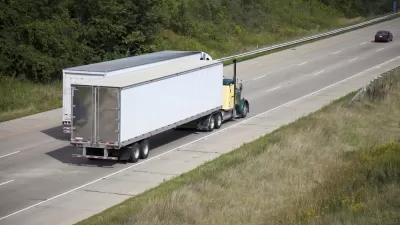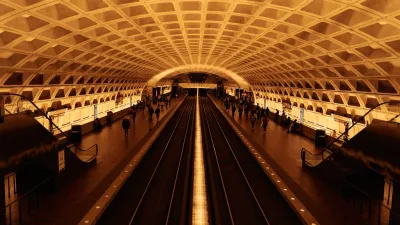All but nine states have decreased the number of "structurally deficient" bridges since the 2007 Minneapolis bridge collapse. That improvement, however, is far from permanent. Can the federal government and states maintain their progress?
"The number of bridges considered to be in the worst shape has declined in the vast majority of states — all but nine — in the years since a Minneapolis bridge collapse brought national attention to the America’s decaying bridges," reports Daniel Vock.
"All told, the number of 'structurally deficient' bridges dipped by 14 percent in the last six years. But even with the improvement, one in 10 bridges in the country is still considered structurally deficient."
The article credits public attention after the Minneapolis bridge collapse, as well as federal policies to better manage the inventory of bridges and roads, with the improvement.
But, "[the] federal surface transportation law expires this fall, and federal transportation money to states may dry up even before that. If Congress does not find the money to continue or increase current funding levels, the number of troubled bridges could start climbing again."
The article also includes a state-by-state breakdown of where the improvements have been most, or least, profound.
FULL STORY: Under Scrutiny, States Trim List of Bad Bridges

Alabama: Trump Terminates Settlements for Black Communities Harmed By Raw Sewage
Trump deemed the landmark civil rights agreement “illegal DEI and environmental justice policy.”

Study: Maui’s Plan to Convert Vacation Rentals to Long-Term Housing Could Cause Nearly $1 Billion Economic Loss
The plan would reduce visitor accommodation by 25% resulting in 1,900 jobs lost.

Planetizen Federal Action Tracker
A weekly monitor of how Trump’s orders and actions are impacting planners and planning in America.

Wind Energy on the Rise Despite Federal Policy Reversal
The Trump administration is revoking federal support for renewable energy, but demand for new projects continues unabated.

Passengers Flock to Caltrain After Electrification
The new electric trains are running faster and more reliably, leading to strong ridership growth on the Bay Area rail system.

Texas Churches Rally Behind ‘Yes in God’s Back Yard’ Legislation
Religious leaders want the state to reduce zoning regulations to streamline leasing church-owned land to housing developers.
Urban Design for Planners 1: Software Tools
This six-course series explores essential urban design concepts using open source software and equips planners with the tools they need to participate fully in the urban design process.
Planning for Universal Design
Learn the tools for implementing Universal Design in planning regulations.
Caltrans
Smith Gee Studio
Institute for Housing and Urban Development Studies (IHS)
City of Grandview
Harvard GSD Executive Education
Toledo-Lucas County Plan Commissions
Salt Lake City
NYU Wagner Graduate School of Public Service




























